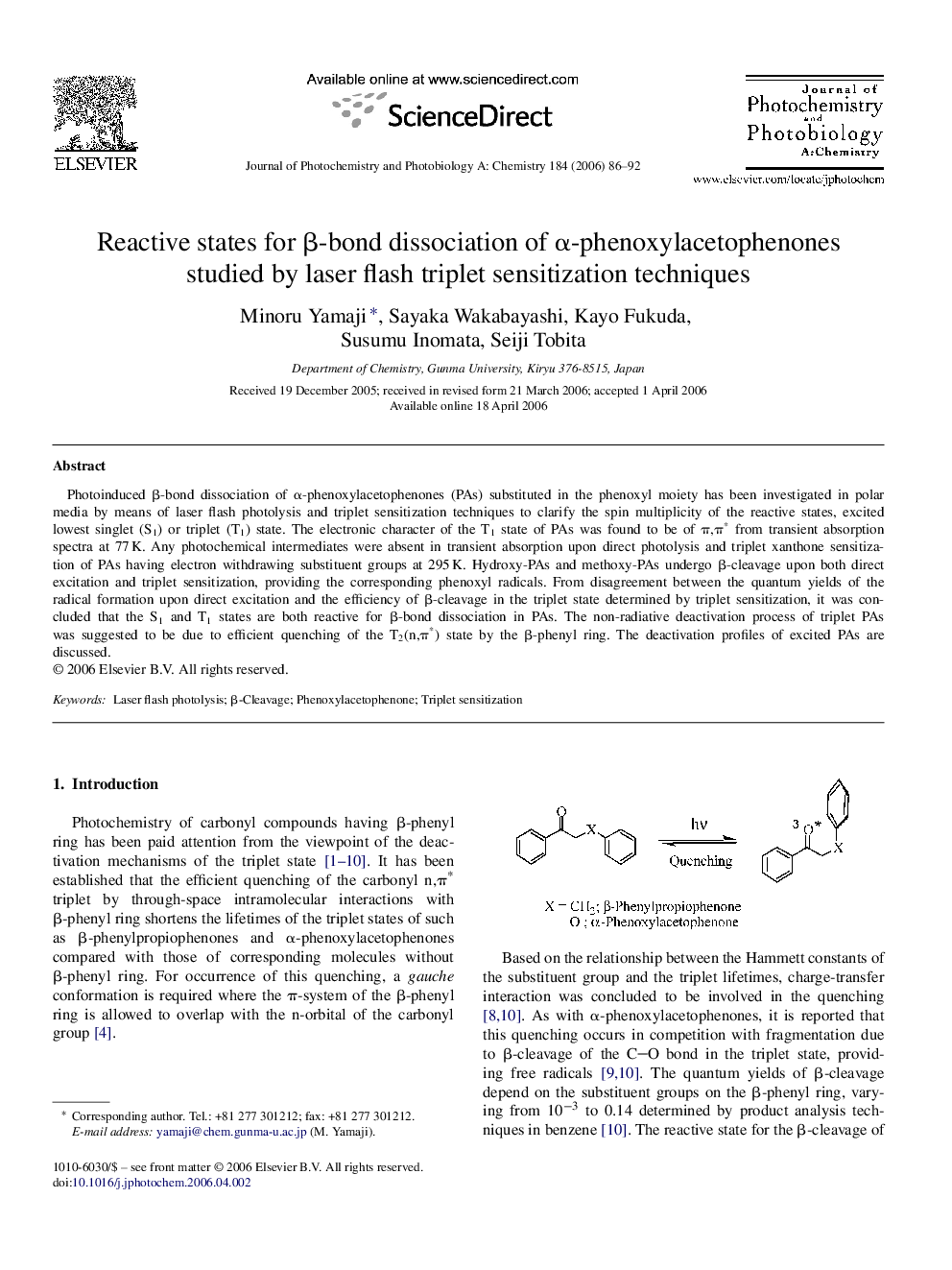| Article ID | Journal | Published Year | Pages | File Type |
|---|---|---|---|---|
| 28581 | Journal of Photochemistry and Photobiology A: Chemistry | 2006 | 7 Pages |
Photoinduced β-bond dissociation of α-phenoxylacetophenones (PAs) substituted in the phenoxyl moiety has been investigated in polar media by means of laser flash photolysis and triplet sensitization techniques to clarify the spin multiplicity of the reactive states, excited lowest singlet (S1) or triplet (T1) state. The electronic character of the T1 state of PAs was found to be of π,π* from transient absorption spectra at 77 K. Any photochemical intermediates were absent in transient absorption upon direct photolysis and triplet xanthone sensitization of PAs having electron withdrawing substituent groups at 295 K. Hydroxy-PAs and methoxy-PAs undergo β-cleavage upon both direct excitation and triplet sensitization, providing the corresponding phenoxyl radicals. From disagreement between the quantum yields of the radical formation upon direct excitation and the efficiency of β-cleavage in the triplet state determined by triplet sensitization, it was concluded that the S1 and T1 states are both reactive for β-bond dissociation in PAs. The non-radiative deactivation process of triplet PAs was suggested to be due to efficient quenching of the T2(n,π*) state by the β-phenyl ring. The deactivation profiles of excited PAs are discussed.
